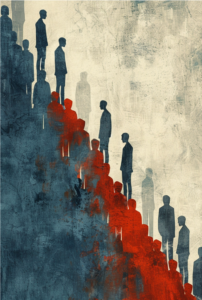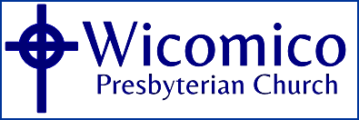
Ephesians 1:3-14
In 1871 two archeologists found a piece of engraved stone from the Jerusalem temple – the one King Herod built; the one that was destroyed in the year 70 AD. The Greek letters carved on it spelled out a stern warning: “No foreigner is to enter the barriers surrounding the sanctuary. He who is caught will have himself to blame for his death which will follow.”
This was one rule it appears they were strict about. No gentiles were permitted to enter the temple. But it was not the only rule. There were degrees of acceptability in the temple worship of the time.
The outermost area of the temple was called the court of the gentiles, and it was a large, open, public area. Anyone could come into the outer court, and it was the place where pilgrims could exchange their currency and purchase animals for sacrifice. Within this courtyard there was a low barrier, called a soreg; a few steps past the soreg was a wall that separated the public area from the inner courts of the temple. Immediately beyond the wall was the court of the women, because this was as far as Jewish women were allowed to enter. Further within, there was an inner court, the place where the burned sacrifices were made. Jewish men were permitted to enter the inner court, as long as they didn’t have certain conditions that would make them disqualified. And finally, the innermost region, called the Holy of Holies, where only the purest ones could enter.
This notion of purity doesn’t have anything to do with whether you washed that morning with Ivory soap. It is a religious concept that is laid out in detail in the Old Testament books of Leviticus and Numbers. When you read these texts, you realize that there were many types of people who were restricted from participating in temple worship. Foreigners, of course; non-Jews, who were deemed intrinsically impure, were barred. Women; eunuchs; anyone with a skin disease; these were all restricted from entering beyond a certain point. But additionally, Jewish men who were imperfect in some way were prevented from entering the inner region. The scriptures speak of the blind and the lame, dwarves, and hunchbacks, all excluded. Anyone judged to have abnormalities or deformities, excluded. There were many ways a person could be shut out.
But this is not just a Jewish thing, of course. It is a fact of human nature.
The human mind likes order, and if we can’t find it in the world around us, we create it. We divide people up into categories, and then judge those categories. So, in the end, there are those who are like us and there are others. These others might be frightening to us. They might just be perplexing to us. But often they somehow seem wrong to us.
In the first century, the church was small but growing fast, and the question of who should belong was still a matter of controversy. Among those who gathered to worship, there were differences in race and culture, differences that really could not be erased. Nonetheless, in the church, the scripture says, there is no longer the circumcised and the uncircumcised. There is one body in Christ.
It was a matter that had been settled, at least in theory, by the Jerusalem Council – we can read it in the book of Acts, chapter 15. Yet, it seemed that the ruling did not manage to erase prejudices, strong opinions that the old way was the best way, that these newcomers just didn’t belong. It was an issue that needed to be addressed in many of the New Testament epistles, such divisiveness was being stirred up in response to the work of the Spirit.
Like it or not, the Holy Spirit was crossing over boundaries and drawing diverse groups together in Christ – but those people were, maybe, a little averse to being drawn together. They remained preoccupied with their differences, and the ways those differences made them uncomfortable with one another.
There were the poor Christians, some of them enslaved, and there were the wealthy Christians. They had dramatically different lifestyles, obviously. And the wealthy ones were sometimes unable to comprehend the unique challenges the poor ones faced every day.
We are still beset by these kinds of problems. It is hard for us to understand people who are different from us. For those who abide strictly by the law, it is hard to understand anyone who breaks the law. For those who are blessedly free of addiction, it can be hard to understand those who suffer under the weight of addiction. For those who have enough, or more than enough, it can be hard to understand those who don’t have enough and, to our minds, do a poor job of managing what little they have.
Put simply, it can be very hard for us to understand those whose path through life has been different from ours. And what we can’t understand, we judge. Still, while we continue to struggle with acceptance, the Holy Spirit goes on crossing boundaries, the work that Jesus began.
The radical thing that Jesus Christ did in his life was to draw the outcasts to himself. He healed those who had been thrown out of society, giving them a chance at reconciliation, an opportunity to be restored to wholeness. Jesus spoke to the gentiles and listened to them, giving them the respect others might reserve only for members of their own tribe.
The Apostle Paul continued this mission; he went out to the gentile communities. He listened to them and shared with them the good news of Christ Jesus. He told them this was good news for them, too.
This letter to Ephesians speaks directly to the gentiles, saying you who were once far off, or aliens, have been brought near, by the blood of Jesus Christ. You who were once excluded: the gentiles, but also the women, the blind and lame and deformed, the sick, the imperfect. Now the walls and barriers have been removed, the gates are open. In Christ, all have been brought together.
For in him we find our peace. In him we are given a new identity. And in him we have a whole new way to frame our outlook on the world.
For we once looked at the world as a framework of lines dividing peoples into groups, separating them from others. We found our identity by focusing on the lines and what they represented: differences in acceptability, differences in belongingness. The lines represented the ways we differed, and we defended the boundary lines because they defined who we were against who we were not: the pure on this side of the line; the impure on the other side. The lines defined us and them, friend and enemy.
But in Christ everything changed. And we no longer look to the boundary lines, but we look to the center, which is Christ. The holy of holies. He is our center, our purpose, what we are drawn to, where we find our peace. He is our peace.
And so in Christ all come together. The circumcised and the uncircumcised. The slave and the free, the Jew and the gentile, the north and the south and the east and the west, all came together to find their peace in him. Turning our attention away from the lines that separated us and toward the center which now defines us.
We are a new creation in Christ; together, we form a dwelling place for God, with Christ as the cornerstone holding us together. Let me tell you: We need him as our cornerstone, every hour of the day and night, because we surely could not hold ourselves together on our own.
But together we are called to be, and called to live in unity, one body in Christ – a notion so radical it makes 21st century Americans shake their heads in disbelief. “You’re dreaming,” they might say. “Wake up. Get real. Leave that kumbaya stuff in church, you’re in the real world now.”
But, my friends, we have been adopted into God’s family, and that is not an identity we can take on and off at will. We carry this with us in every moment, every place; it unites us with all who are fellow members of this household, whoever and wherever they are. It is a blessing and also a calling, and it challenges us to live in a way that is different from what we encounter every day in the world.
It calls us to see one another differently, as brothers and sisters, all beloved by God, even while we struggle mightily to feel that way about one another.
It calls us to cross those divisions. To leave behind the old ways of speaking about others. We are tempted to fall back, to use the language that we hear around us – language that comes out of division and aggravates that division. But as members of God’s household, we must leave that behind. We have no right to strip anyone of their God-given humanity.
We cannot call another human being vermin simply because we are on different sides of an issue. We cannot call someone a monster, even if their actions seem monstrous. These ones were created in God’s own image, just as we were. These ones we would call less than human, they are human, beloved by God, just as we are.
The words to the Ephesians are a precious gift, because they tell us we belong, we who were once outcasts, are beloved. And these words are also a calling for the whole church, to see ourselves united in Christ, to know ourselves empowered by the Spirit to carry Christ, who is our peace, with us into all the world.
And to show the world what Christ’s peace looks like, sounds like, feels like, tastes like.
The world says “hate,” but God says no. The world says we are hopelessly divided, but God says no. The world says, “build a wall.”
And God says no. No. I have a better way. And I call upon you to embody that better way.
May it be so.
